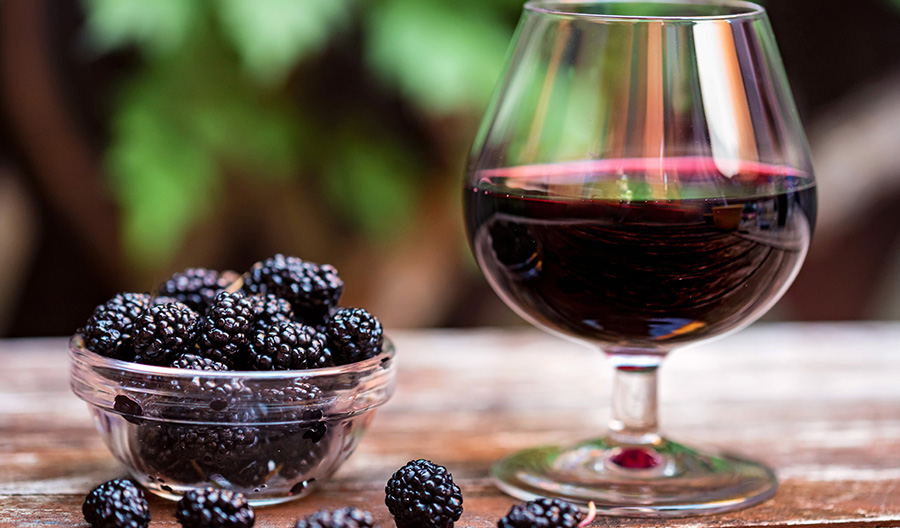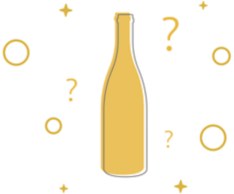In my many years working in hotels and restaurants, it was inevitable that our management team would get a request (aka “mandate”) to increase our guest check average. Often, after some product mix evaluations, it was determined that if each server could sell an additional dessert, coffee, or after-dinner drink, the average per-person spend could increase by “x” amount of dollars. In theory, this makes perfect sense and seems like low-hanging fruit but without a few careful considerations when creating a dessert wine or after-dinner drink program, that low-hanging fruit may not be so easy to capture. Understanding the various methods of production used to produce sweet wines will help to ensure you have flavor diversity in the wines being offered. Understanding how the method of production will impact the overall flavor of the wine becomes a guide to matching it with the right dessert on the menu. Understanding the method of production and flavor profile opens the path to proper staff training and will inspire other creative uses for dessert wines in your beverage program.
Dessert wines fall into two broad categories of sweet wine produced in the vineyard, and sweet wine produced in the winery. Sweet wines produced in the vineyard include late-harvest wines, botrytis-affected wines, ice wines, and wines made from dried grapes. Sweet wines made in the winery include wines fortified with neutral spirit during the fermentation process to retain natural grape sugars, or wines fortified once fermentation is complete and sweetened afterward. The method of production has a big impact on the flavor of the finished wine, especially when the wines are deliberately exposed to oxygen to accelerate aging, and will determine how best to use it to pair with the dessert items on your menu.
Let’s start with wines made out in the vineyard. Late-harvest wines are made from grapes that have been left on the vine longer than what would be considered a normal time to harvest. By leaving the grapes on the vine a little longer more sugar can develop in the grapes and often the grapes will lose moisture and start to shrivel, further concentrating the sugars and flavors of the grapes. Some vineyards are located near rivers and lakes which provide the right conditions for botrytis to develop, causing the grapes to shrivel, concentrating the sugars, acids, and other flavors in the grapes. Sauternes is a famous region in Bordeaux which specializes in this style of a dessert wine but there are several regions in the Loire Valley that make similar wines along with the region of Alsace. Germany, Austria, and Hungary also make high-quality botrytis wines. The color of the grapes will play a major role in the flavors of the resulting wine. Wines made from red grapes will have concentrated cherry and dark berry flavors while wines made from white grapes will typically have pineapple, apricot, and candied citrus flavors.
For great examples of the late-harvest, botrytis-affected wines, look to classic regions such as Sauternes, Barsac, Cadillac, and Loupiac in Bordeaux. These wines will be made from Semillon and Sauvignon Blanc. The regions of Bonnezeaux and Quarts de Charmes in the Loire Valley make delicious sweet wines from Chenin Blanc and to experience sweet wines from the region of Alsace look for wines labeled Vendages Tardives and Sélection de Grains Nobles. Similar wines from Germany and Austria will be labeled beerenauslese and trockenbeerenauslese. Don’t forget about Tokaji Aszú and Tokaj Essencia from Hungary. Look for terms like “Late Harvest”, “Botrytis”, and “Noble” on wines from New World wine regions. Germany and Canada specialize in ice wine, and wines made from other countries might be labeled Vin de Glace or mention a technique called cryoextraction to indicate a wine made from the juice of frozen grapes.

Dessert wines made from dried grapes have unique and distinctive flavors and can provide an interesting diversity to options offered by the glass. Italy and Spain have several classic examples of this style of wine. Look for the terms recioto or passito on an italian wine label to indicate a sweet wine made from dried grapes. Recioto della Valpolicella and Recioto di Soave are two examples from the Veneto region, Passito de Pantellaria is produced on an island off the coast of Sicily, and Vin Santo is produced in Tuscany and other regions of Italy. All of these wines will be made from dried grapes and are delicious on their own or served with biscotti, cheese, or other desserts. The Montilla-Moriles region of Spain makes a sweet wine called PX which is made from sun-dried Pedro Ximénez grapes. France and Austria also make wines from dried grapes, look for the French term vin de paille and the German terms strohwein or shilfwein in Austria. All these terms indicate the wine was made from grapes dried on straw mats.
There are several styles of sweet wine made in the winery using a technique called fortification. Once the grapes have started fermenting, sugar levels are monitored and when the sugar in the must has been reduced to the desired level a neutral spirit is added to stop the fermentation process retaining the natural remaining sugars in the grapes. There are basically two pathways these fortified sweet wines will take, one that will produce a concentrated style of wine emphasizing the fruit flavors found in the grapes, and the other where the fortified sweet wines are allowed to be exposed to oxygen by aging them in barrels producing sweet wines with aromas of nuts, caramel, and dried fruits.
The styles of fortified wine that emphasize the fruit flavors are Ruby, Late-bottled Vintage, and Vintage Ports from Portugal. Vin Doux Naturels from France with terms like grenat or rimage will indicate a style that emphasizes the fruit flavors. Muscat de Beaumes de Venise and Muscat de Rivesaltes are classic examples of the style. New World wine regions produce similar wines so look for terms that indicate it was produced in a reductive style to emphasize the concentrated fruit flavors.
The styles of fortified wine that have been aged to produce flavors of dried fruit, caramel and nuts are Madeira, Tawny Ports, and Colheitas from Portugal. Cream Sherries from Spain, Vin Doux Naturels from France with statements like ambré, tuilé, or traditionnel. Similar wines are produced in New World wine regions, look for terms indicating use of a solera or other signs of oxidative aging. The Rutherglen region in Victoria, Australia has a long tradition of producing fortified wines aged oxidatively in a solera.
How many dessert wines do you need to offer by the glass? I think at least two, more if you have a robust wine program. If you only offer two be sure that each one is made using a different technique. In other words, have one late-harvest wine and one fortified sweet wine. This will give you enough of a range to accommodate different guest preferences. With so many options for dessert wines choosing those selections could be a challenge so one way to guide the selection is to look at your dessert offerings. Most dessert wines pair very well with cheese, so offering a cheese plate and training your staff to recommend a dessert wine can easily enhance the guest’s experience and increase the average check. Dessert wines that emphasize fruit flavors like late-harvest wines and fortified wines such as a Ruby Port pair well with desserts where fresh fruit and fruit purees are the focus. Desserts featuring dried fruit, caramel, and spices tend to pair well with the dessert wines that have been aged oxidatively like Tawny Ports, Madeira, and Cream Sherry. One thing to remember is the general guideline that your dessert wine should be sweeter than your dessert. If the Dessert is sweeter than the dessert wine, the wine will seem less sweet and possibly seem more bitter and acidic. Working with the chef to adjust sugar levels in the dessert will ensure that the dessert wine will be perceived by your guests the way you intend it to be.
Another consideration is shelf-life of the product and implementing creative ways to ensure product rotation to minimize waste. Sweet wines tend to be more stable after opening than a typical dry wine, and fortified wines can last for several weeks after being opened. Even though they may last longer than the average dry wine, it is important to find ways to increase product rotation. The most effective way to do this is through proper staff training. Let your staff taste the wines if local laws permit it and let them taste the wine paired with the desserts. If your team is excited about the wines and the desserts it will help increase their enthusiasm and help improve product rotation and increase both dessert and dessert wine sales. Challenge your bar team to create a cocktail incorporating the dessert wines offered by the glass. Sweet wines have many complex flavors which can add layers of interest to a cocktail when crafted in the right proportions and can offer an additional way to utilize the wines once they have been opened. Consider using a ruby or a tawny port in place of vermouth for a cocktail. Use a late harvest wine to add layers of sweet fruit flavors to a mixed drink. What interesting combination could be created by incorporating a nutty sherry or madeira into a cocktail?
A well-designed offering of dessert wines by the glass has the potential to enhance your guest’s experience by creating interesting wine and dessert pairings. These same dessert wines can also become part of the tool kit for your mixology team and inspire them to create updated interpretations of classic cocktails or completely new mixology combinations. Ultimately, with proper training a carefully thought out dessert wine program will provide a holistic way to increase both food and beverage revenue allowing you to harvest a little more of that low-hanging fruit.

